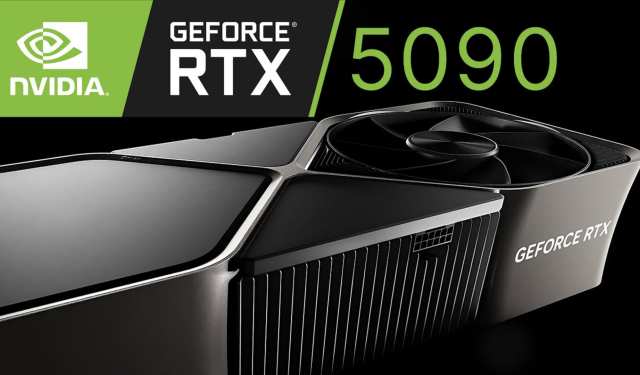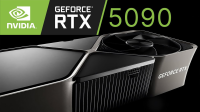The NVIDIA RTX 5090 has burst onto the gaming scene as the world’s fastest GPU, boasting impressive specifications and performance claims. However, it comes with a staggering price tag of $2,000, prompting gamers and professionals alike to weigh the cost against the benefits. This article explores the significant advancements and unique features of the RTX 5090, while comparing them to its predecessors, the 4090 and 3090, to assess its overall value in the gaming ecosystem.
Staggering Performance: RTX 5090 vs. Predecessors
Recently touted as a technological marvel, the RTX 5090 represents a significant leap in gaming graphics, purportedly offering nearly triple the performance of the RTX 4090. With 92 billion transistors and a compact 32GB memory, it’s aimed at pushing the boundaries of frame rates, with claims of nearly 1,000 FPS in graphically intensive games like Cyberpunk 2077. However, while these numbers may sound impressive, the actual performance uplift over the 4090 is reported to be around 30% in most games, indicating that the jump isn’t as monumental as the previous upgrades from 3090 to 4090.
In practical terms, this performance increase translates to a noticeable enhancement in gaming experiences. Games like Red Dead Redemption 2 and God of War have seen improvements of up to 41% and 38%, respectively. While these upgrades are significant, they pale in comparison to the 74% performance leap when transitioning from the 3090 to the 4090. Thus, for those already owning a 4090, the upgrade to 5090 may not be as compelling unless they are heavily invested in gaming at maximum settings.
Power Consumption: A Trade-off for Speed
The RTX 5090’s jaw-dropping performance comes at a cost—specifically, its power draw. The power consumption has seen an excessive increase, with reports totaling around 500 watts on average, which is a staggering leap from the previous generation. While the 3090 and 4090 maintained a more moderate range around 350 watts and 450 watts, respectively, the 5090’s demand for 575 watts TDP poses a new challenge for both performance and system cooling. Enthusiasts would need to consider optimal cooling solutions and higher-capacity power supplies to fully unleash the potential of this powerhouse GPU.
The increase in power draw raises critical questions about energy efficiency for this new architecture. Unlike previous generations where performance gains were vacuum-sealed with power efficiency improvements, the RTX 5090 doesn’t exhibit a similar trend, leading some to critique its design choices. Gamers and creators wanting to harness its full potential will need to ensure their systems are equipped to handle the demands, evoking concerns around future upgrades and environmental impact.
Multiframe Generation: A Revolutionary Feature
The standout feature of the RTX 5090 is the introduction of Multiframe Generation, promising to significantly enhance frame rates using AI to generate additional frames. This technology offers options for multiplying frame rates by 2x, 3x, or even 4x, enabling users to experience highly interactive and immersive gameplay, even in resource-intensive titles like Cyberpunk at 4K resolution. Testing reveals that while the frame rates can soar up to 240 FPS, the technology does come with its flaws; users have reported noticeable motion artifacts, especially during fast-paced scenes.
While the initial skepticism surrounding AI-generated frames had many doubting its efficacy, the results have shown that the technology indeed provides a dramatic improvement in smoothness for gamers, even if the visual fidelity takes a hit in certain scenarios. However, the question remains whether these compromises would dissuade competitive gamers, as the integrity of gameplay fidelity often takes precedence in high-stakes environments.
Cooling and Design: Engineering Marvel or Overkill?
Accompanied by a sleek new cooler, the RTX 5090’s thermal management system is designed to handle its high power draw while maintaining operational efficiency. In tests, the cooler managed temperatures in low 70s degree Celsius range without breaking a sweat, showcasing an engineering feat of modern gaming technology. For many gamers who spend long hours engaged in high-resolution gaming, this cooling prowess ensures both longevity and performance stability—an essential trait for flagship products.
However, with the RTX 5090 being positioned well above the pricing scale, the question of value comes into play. Gamers who heavily rely on 3D rendering or intensive applications may find the investment justified; for the average enthusiast, though, it beckons the reflection upon how much performance is genuinely needed versus the enticing allure of being equipped with cutting-edge technology.
The NVIDIA RTX 5090 undoubtedly pushes the boundary of what is technically feasible in gaming graphics. With its state-of-the-art features, exceptional processing power, and innovative Multiframe Generation technology, it stands distinguished yet raises significant considerations regarding power consumption and price-point implications. As the landscape of gaming continues to evolve, potential buyers must evaluate whether the RTX 5090 fits their needs or whether waiting for future developments may yield a more balanced and efficient solution. What does the exorbitant price of the RTX 5090 say about the future of gaming hardware, and is the industry ready for the inevitable shift in how performance is measured?


